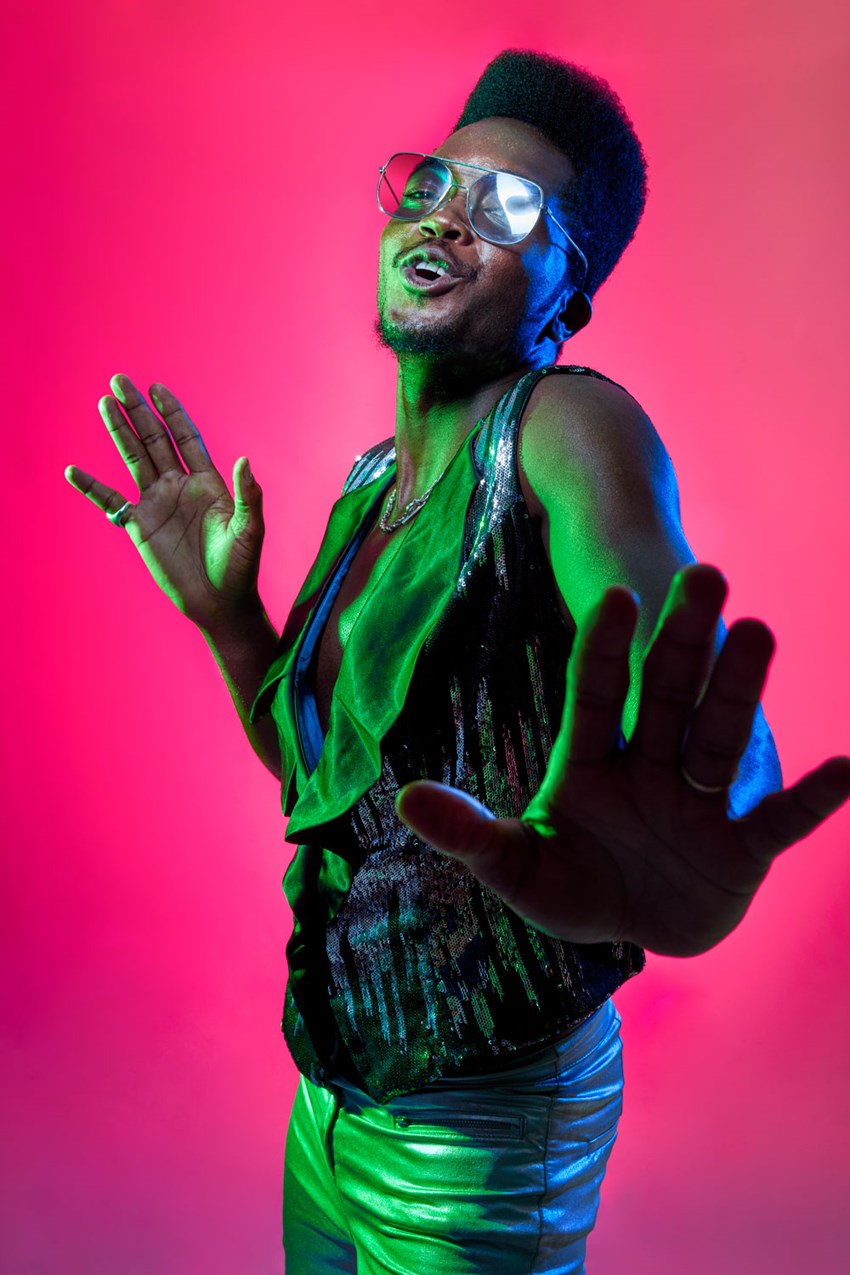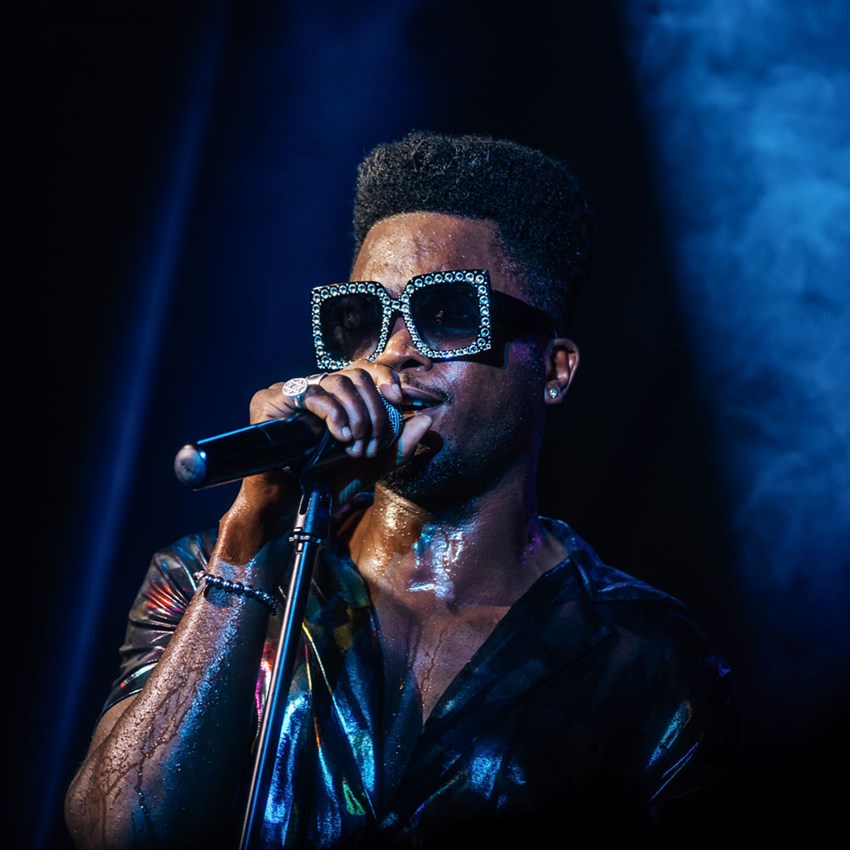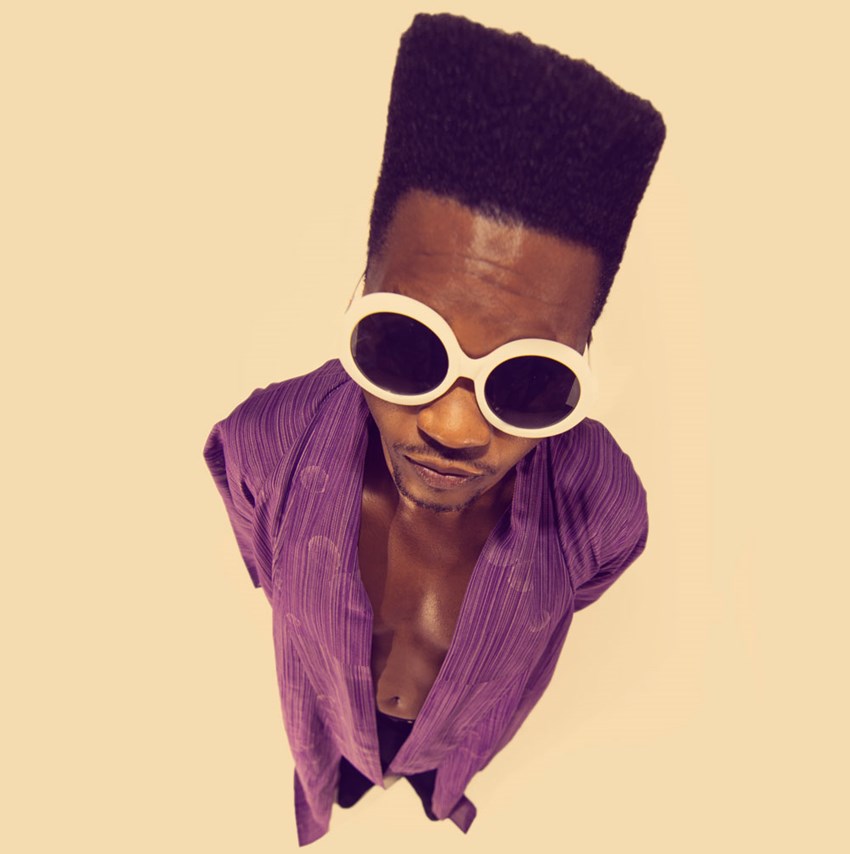Tuesday, September 13, 2022
Cimafunk interview: “You must never forget where you come from”
Jane Cornwell catches up with Cimafunk, the Cuban sensation taking the world by storm

Cimafunk (photo: Raul González)
Cimafunk wasn’t born with the funk. For the longest time a career in music wasn’t even on his mind. But his family home on Luis Lazo street in the suburbs of Pinar del Rio, the centre of tobacco production in western Cuba, pulsed with the sounds of the area. There was traditional son, danzón and rumba rhythms on the radio; Afro-American soul records that his uncle, a neighbour, loved to play and there was reggaeton, of course. If you were a kid in Cuba in the 90s and 2000s, there had to be reggaeton. Then there were songs sung at the local nueva trova club by such esteemed troubadours as Pablo Milanés and Ray Fernandez, whose stuff he adored.
“Every single day there was music coming from somewhere,” says Cimafunk (aka the 33-year-old Erik Alejandro Iglesias Rodríguez). “My mum sang Michael Jackson songs around the house in perfect tune. On Sundays I was always singing and dancing with my sister and my cousins. I had this weird little trumpet someone gave me, and I grew up singing in the choir at my grandma’s Baptist church.”
“I knew I had a pretty good voice,” he adds, “and I always had some sort of melody in my head. Now I cannot stop. But all this?” In a hotel room in New York, midway through an American tour, he pauses to flash a grin. “It’s crazy, right? Totally loco!”

Cimafunk (photo: La Pistola de Monik)
Cimafunk’s delirious blend of Afro-Cuban rhythms and US-spawned rock, hip-hop and funk has hit a sweet spot internationally, and no wonder. His current album El Alimento (The Nutrition) is a dynamic collection of blues ballads, Spanish-guitar-tinged anthems and freewheeling dance tunes that mines the gold at the intersection of different genres, with the whole thing buoyed by Cimafunk’s fluid tenor voice, recalling everyone from James Brown to Benny Moré.
The album also boasts features from a mélange of A-list international collaborators: US hip-hop legends CeeLo Green and Lupe Fiasco and the funk godfather himself, George Clinton. Afro-Colombian hip-hop crew ChocQuibTown are here, along with Jamaican dancehall star Stylo G. From Cuba come the Afro-Cuban reggaetonero El Micha, evergreen Cuban rumba outfit Los Papines and iconic pianist Chucho Valdés, founder of seminal 1970s jazz/funk/timba group Irakere. “What Erik has done is unite the two tendencies, Afro-Cuban and African-American,” Valdés has been quoted as saying. “He has converted this into a new school that until now I haven’t heard done.” Cimafunk lets out a low whistle, “Chucho Valdés, man. He invented a whole new genre [timba]. Who can say that?”
It’s not like Cuban music has never had a thing with African-American rhythms. There has been plenty of crossover. In 1947 the young Cuban conga virtuoso Chano Pozo joined Dizzy Gillespie’s band onstage at Carnegie Hall in the first attempt to fuse syncopated Cuban rhythms with jazz at a professional level, opening the way for the likes of Ray Barretto and Mongo Santamaría and others up to today. In the 1960s Cuban son famously went to New York and returned to the island as salsa, and down on the military base in Guantanamo province in the 70s and 80s, the African American variety show Soul Train reigned supreme.

Cimafunk (photo: Emmy Park)
Cimafunk, however, has lassoed the zeitgeist with his slick showmanship and natural musical ability. Everyone, it seems, wants a piece of this former medical student with the smooth moves and a hype man’s zeal. Having set out his stall in 2017 with his self-released debut album Terapia (Therapy), he became a household name in Cuba after his Afrobeat-flavoured single ‘Mi Voy’ went gangbusters. Visit Havana in 2018 and there, all along the Malecón, hanging out at contemporary art space Fabrica del Arté, were millennials decked out à la Cimafunk in flares, fake fur and oversized shades.
In 2019 he made his first foray into the US market at South by Southwest (SXSW) music festival. Backed by a sprawling all-Cuban band on guitars, keys, drums, percussion, trombone and saxophone, buoyed by an aesthetic variously involving fly away collars, bell bottoms, bare male chests with bow ties and some serious Afro-topiary, his effect was immediate. Billboard breathlessly named him as a ‘Top 10 Latin Artist to Watch.’
Rolling Stone waxed educational: ‘An electrifying combination of funk and soul, layered over the five-beat clavé, or the heartbeat of Cuban music, brought to Cuba by enslaved people from West Africa.’ Which is fitting, given that the name Cimafunk is a nom de plume chosen for its associations with cimarrón, which speaks to Cubans of African descent who resisted and escaped slavery, creating walled palenque communities by way of protection, as well as to Cimafunk’s self-styled status as a pilgrim in search of a new musical hybrid.
His message, he says, “is all about happiness and enjoying yourself. It all depends on what you want to do with your time. To me, the most important things in life are family, love, food and sex.” And of course, community: “From living in Pinar del Río I know the importance of being together, laughing together, living together. I want people at a Cimafunk show to feel that sort of communion.”

Cimafunk (photo: Damian Diaz)
Cimafunk was expected to work in the health profession, like his parents, and more obliquely, his grandmother, a herbalist and healer. “She’s 100-years-old this year. She’s always been the one that cures the kids, gives people natural medicine from plants, who knows about the good foods. From her I get my health and energy.”
He was in his third year studying medicine at university, with side hustles in a reggaeton crew and a stint singing trova songs he’d written himself (“the lyrics are about social issues and super important; I used a lot of metaphor”), when he caught a show by Ray Fernandez that was so full of life and possibility and freedom, that in 2014 he dropped out and moved to Havana to be a musician.
As the Cuban catchphrase goes, no es fácil. Is not easy. “In Pinar del Río it was always so chilled. You could walk barefoot to see a gig! In Havana, I had nowhere to live so I spent one year staying on different couches. But I was receiving so much musical information, doing so much writing and recording. Terapia came out two years later.”
One of its tracks, ‘Alabeo’, features singer Brenda Navarrete, a mainstay of Interactivo, the renowned jazz collective led by acclaimed pianist, singer and composer Roberto Carcassés and featuring the likes of rapper Telmary Díaz and trumpeter Julito Padrón. Cimafunk sang lead vocals with Interactivo for two years, in between guesting with bands such as Hoyo Colorao and doing backing vocals for David Torrens and Raúl Paz.
Along the way he got an eight-month gig on a cruise ship, covering tunes from the funk and soul songbook. His hair got higher. His hems got wider. His English became fluent. “It was a big training. I was mixing in Afro-Cuban acts like Benny Moré alongside songs by James Brown, Bill Withers, Earth, Wind & Fire and Sly and the Family Stone. My voice was so ready, singing for five hours every day. I recommend that everyone goes on a cruise,” he continues, happily. “It is like being in a lovely safe country in the middle of the ocean where everything’s okay. You can just lie down in the sun.”
On his return, he founded Cimafunk: a multidimensional project greater than the sum of its parts, where musicians, designers, photographers, producers, managers and stylists were vital cogs in the wheel. After Terapia came the single ‘El Potaje’ (The Stew), a rollicking, passing-of-the-baton tune featuring Cuban musical royalty Orquesta Aragón, tres master Pancho Amat, Chucho Valdés and the diva Omara Portuondo. The accompanying video was part of the quality package.
He’d stormed the US and Europe and performed his only gig in London when the pandemic hit, stalling his career. Locked down in 2020, he released the EP Cun Cun Prá and reconfigured his plans for world domination. Once he’d secured the services of musician/Grammy-winning producer Jack Splash (Alicia Keys, Kendrick Lamar, John Legend) for the boundary-breaking El Alimento, he was away.
“Jack Splash and I talked a lot about the sound I wanted, how to develop the group, and he started sending me a lot of music to listen to. Marvin Gaye. Fania All-Stars. Parliament. I passed through a whole nutritional process and then I started to dream,” says Cimafunk, who splits his time between the south of France and Miami (where he has family among the Cuban diaspora), and whose fan-boy gratitude is palpable. “I was like, ‘Yo, bro, how about we get George Clinton?’ My manager called around and then there we were at George’s studio in Florida, jamming like we were sitting on the Malecón, drinking rum and talking about life. He threw in classic George lines like ‘What’s a booty? How will I know if I’m shaking it?’”

Cimafunk (photo: Raul González)
He’s proud to have included Los Papines, the exceptional five-piece Afro-Cuban rumba group founded in 1963 and featuring descendants of the original members. “They made some of the most original music in Cuba, I swear. When I was a kid, everyone knew them and their percussion harmonies. It’s been a difficult time for the living legends of Cuban music. But they are helping me.”
He can’t wait to play the UK: Glastonbury, London, WOMAD. “To see all those acts from all over the world in one place is so much musical nutrition,” he says of the latter, “and to be there with my team, my tribe, my family, makes me so grateful.”
But for all his funky crossovers, his reinforcing of the cultural bridge between the long-estranged Cuba and US, Cuba is where his heart is. More specifically, Pinar del Río, where, as he sings in Spanish on the resistance anthem-come-travelogue ‘Eso Es Cuba’, ‘en mi barrio Pinar del Rio, en la calle de Luis Lazo, hay que jugarla, pa andar en talla’ – you gotta have your head in the game to keep up. “You must never forget where you come from,” he says, smiling. “It’s like a year since I’ve had my hands on my hometown. When I go back, I’ll be taking the funk.”
This interview originally appeared in the August/September 2022 issue of Songlines magazine. Never miss an issue – subscribe today

